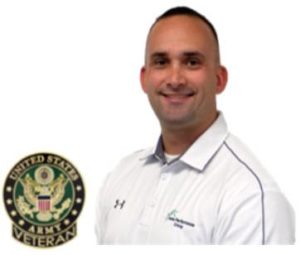Septic System Installation | Why Do I Need a Soil Morphology Test?
When it comes to septic system installation, the U.S. Environmental Protection Agency (EPA) estimates 20 percent of all homes in the United States are served by septic systems. That number translates to roughly 5.7 million homes in the Midwest. The EPA has found most septic system failures are due to inappropriate design, poor installation or lack of maintenance. An EPA sponsored study found older septic systems, more than 30 years old,  or those employing outdated and underperforming designs and technologies, report higher failure rates. The same study estimates failure rates are between 10 to 20 percent. In line with the study referenced above, a U.S. Census Bureau survey discovered more than 403,000 septic system failures in a single year. In the event of a system failure, repair costs for private onsite wastewater systems range from a low of $3,000 to more than $7,000 depending on the problem and locality. Given, both initial first cost for a new installation and repair costs on the back end, the best prevention is good design from the outset and impeccable installation from a state licensed septic contractor. Good design starts with the soil.
or those employing outdated and underperforming designs and technologies, report higher failure rates. The same study estimates failure rates are between 10 to 20 percent. In line with the study referenced above, a U.S. Census Bureau survey discovered more than 403,000 septic system failures in a single year. In the event of a system failure, repair costs for private onsite wastewater systems range from a low of $3,000 to more than $7,000 depending on the problem and locality. Given, both initial first cost for a new installation and repair costs on the back end, the best prevention is good design from the outset and impeccable installation from a state licensed septic contractor. Good design starts with the soil.
Soil Evaluation for Septic System Installation
All septic system design begins with an analysis of the soil. According to the Department of Health 19 CSR 20-3.060 (2) all sites being considered for the construction of a septic system must have a soil evaluation completed. Soils are at the heart of all waste water systems, dispersing wastewater from the septic tank and providing final treatment of effluent. Site specific soil characteristics inform the septic system designer as to the type of septic systems the soil can support. There are numerous basic and advanced septic systems each with different soil requirements. Failure to test, analyze and understand the type and characteristics of site soil results in a doomed system. Evaluation may begin with a preliminary review of the soil surveys archived by the U.S. Department of Agriculture Natural Resources Conservation Service (NRCS). After an initial review of a proximate soil survey, a more detailed evaluation must be conducted. Traditionally, there have been two types of soil evaluations. Over time most jurisdictions have adopted the morphology report over the simple and inaccurate percolation tests. Here is why:
Percolation Tests
Percolation tests have been around for more than a century, and historically, were the standard soil test for septic system design. Studies by the EPA and Department of Health have found many failed systems were installed in soils that simply could not support long term operation. Previously, septic design had been guided by percolation test results. 
Soil Morphology Reports
A soil morphology report is a detailed evaluation of the soil performed by a state licensed soil scientist, or registered engineer or geologist with specialized training and field experience in determining soil characteristics. The soil scientist drills one or more 48-inch holes at the proposed septic system location. The soil scientist records the physical properties 


Home Performance Group Septic System Installation in Kansas City
Needing to install a new septic system, or considering renovations or repairs to your existing private onsite wastewater treatment system. Consider hiring a state licensed septic professional with advanced training in proper design, size, and installation of septic systems. A small upfront investment in careful testing and design along with preventative measures can save both the headache of inconvenience and tens of thousands of dollars in future rework.
At Home Performance Group we are both basic and advanced state licensed in septic systems. We continue to invest in technical training so we can correctly design, specify, size and install septic tanks, septic laterals, low pressure systems, lagoons, and high-pressure drip systems. We have performed numerous septic projects for our clients.
If you are interested in a no-cost in-home consultation, schedule with a Solutions Advisor today.

Article by Larry L. Motley Jr., 11 October 2021
Larry is a graduate of both Wentworth Military Academy and Missouri Western State University earning a double bachelor’s degree in Economics and Finance. Additionally, he maintains six professional tradesman licenses in two states and advanced credentialing in green technology, project and program management, and process improvement. Larry is a three-time combat veteran having served in Operation Iraqi Freedom, Operation New Dawn, and Operation Inherent Resolve. He continues to serve through a value-based building science company focused on providing clients the best design, highest quality installation, and most honest repair services in the community.


Featured Service Areas:
| Missouri | Kansas | ||||
|---|---|---|---|---|---|
|
Belton Blue Springs Cameron Excelsior Springs Gladstone Holt |
Independence Kansas City Kearney Lathrop Lawson Lee's Summit |
Liberty North Kansas City Parkville Platte City Plattsburg Polo |
Raytown Riverside Smithville Sugar Creek Weston |
Kansas City Lansing Leavenworth Leawood Lenexa |
Merriam Mission Mission Hills Praire Village Shawnee |






















